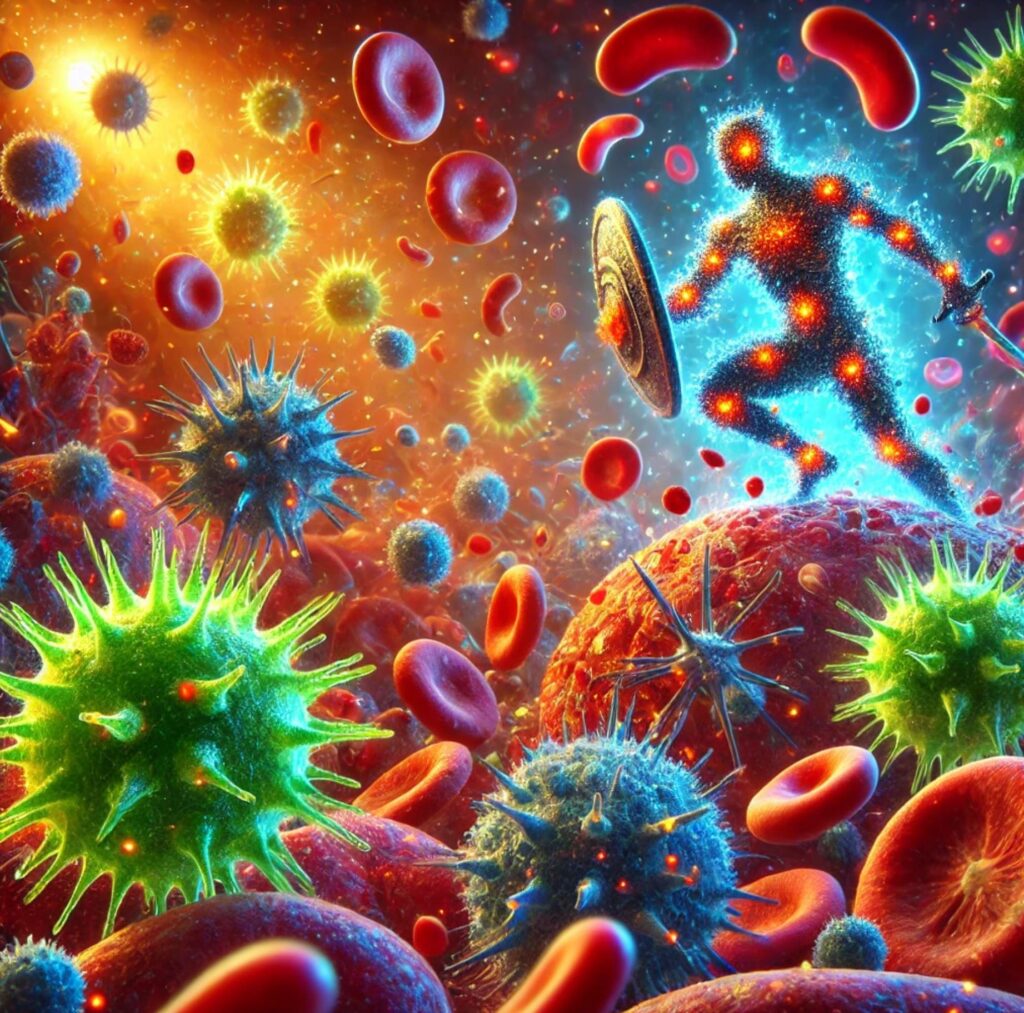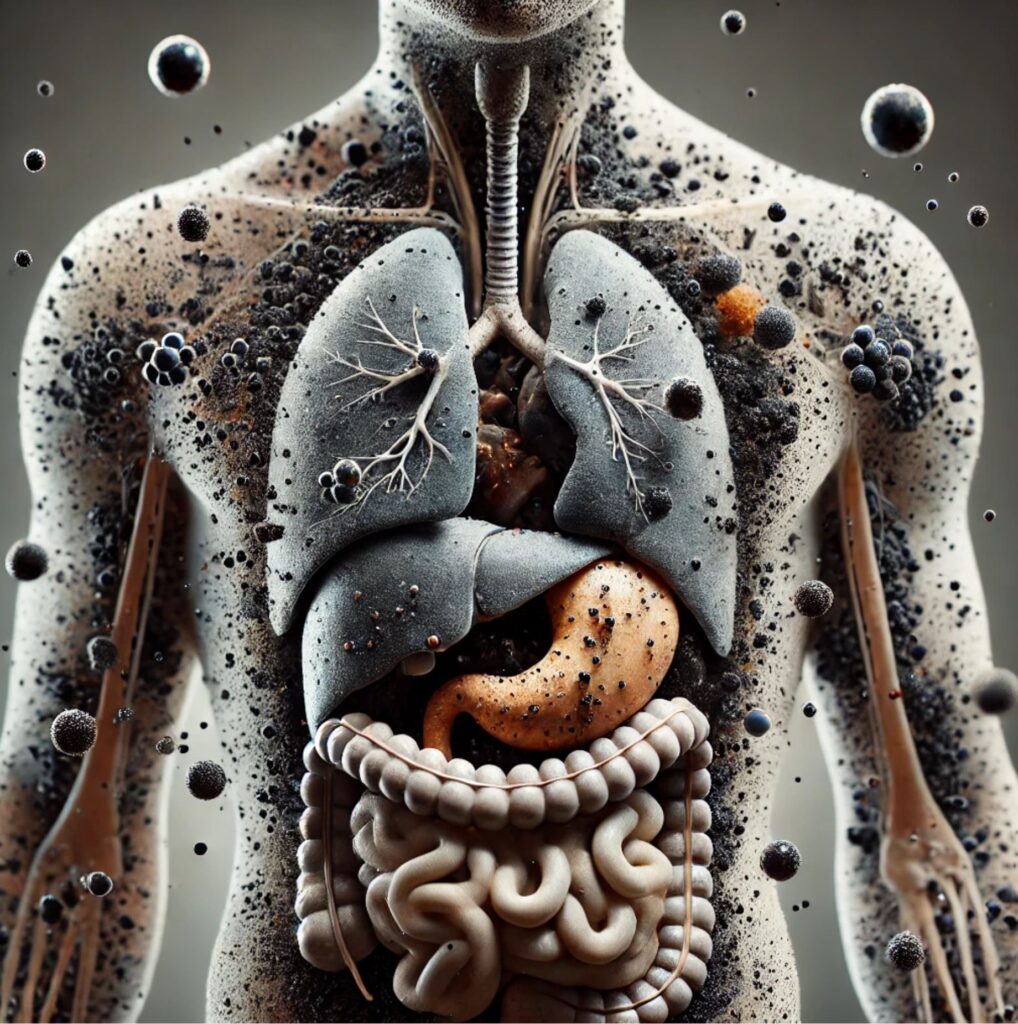Part 1. Minimizing infections
A couple of years ago, my liver enzymes were elevated 10x above the upper limit of the normal reference range on a routine blood test. I did not have any symptoms whatsoever. Two weeks later, they were back to normal. The elevation of liver enzymes was presumably due to an asymptomatic viral infection.
My body is under continuous attack from microorganisms. Most of them won’t succeed in infecting me, but some of them will – often without me being aware of it.

The common cold is the most frequent infectious disease in humans. The average adult gets two to three colds a year. Over 200 viral strains can cause it, with rhinoviruses (and now perhaps SARS-CoV-2) being the most common.
Most of the centenarians say that they rarely got sick throughout their lives. In part because very healthy people rarely get sick but also in part because infections, and the ensuing immune response, wreak a lot of havoc throughout many bodily tissues accelerating the aging process.
Tactics I follow to prevent & treat infections
- Thyroid hormones
- Hygiene & sanitation
- Herpes viruses
- Cytomegaly virus
- Periodically killing sprees
- If I had to choose an antibiotic for infections
Thyroid hormones
A couple of years ago, I weaned off thyroid hormones to gauge how I feel without them. In the first month, I got a minor but noticeable infection three times, despite not having been sick for a couple of years prior. I restarted therapy and (noticeable) infections stopped. In part because of this, I increase my T3 dose by 6.25mcg in the winter.
I am currently off exogenous thyroid hormones.
Hygiene & sanitation during childhood
I grew up in a mountainous area. As a kid, I spent a lot of time outside, either playing in the woods or helping at my grandparents’ farm. It is possible that this lack of sterility had benefitted the development and “training” of my immune system.
Herpes viruses
Most humans are infected with at least two (usually more) herpes viruses. Herpes viruses are retroviruses, which means that they reverse-transcribe their genetic material, which is then integrated into human DNA. These viruses then remain latent in certain tissues throughout the body and constantly try to “break out”.

As I age and the human immune system gets weaker (immunosenescence), the ability of herpes viruses to break out gets better. A sizeable share of the human immune system is constantly trying to fight back these herpes viruses, usually without us noticing.
In fact, it is thought that in the elderly about 40-50% of the adaptive immune system is constantly trying to fight EBV and particularly CMV. Needless to say, infection with herpes viruses is associated with “inflammaging” as well as dementia.
For this reason, a good friend uses 500mg of valacyclovir daily (and plans on being on it indefinitely) aiming to keep viral load and constant reinfection of healthy cells low. Whether the upsides of taking valacyclovir outweigh the risks is currently unknown, though valacyclovir’s safety profile seems to be quite good.
Cytomegaly-virus (CMV)
In contrast to most other herpes viruses, CMV infects a variety of different tissues. It is not only associated with immunosenescence but also with body-wide systemic inflammation, ranging from osteoporosis to hearing loss to dementia. Fortunately, I am currently negative for CMV.
I use 500mg valacyclovir before a date (in case we get intimate) aiming to prevent infection with herpes viruses, particularly HSV-II and CMV. Unfortunately, valacyclovir is not very effective against CMV but it is the only herpes antiviral I am willing to take given that ganciclovir can increase the mutation rate in humans. Once a vaccine is available and proven to be safe, I am eager to get it.
Interestingly, there is evidence that rapamycin prevents CMV infection, possibly by reducing lymphocyte clonal expansion.
Periodically killing some of the organisms that may have set up shop in or on my body
Every other year, I do a short course of doxycycline (14d; 100mg) to clear my organism of some exotic, unwanted co-inhabitants (e.g., protists, exotic bacteria), followed by a short course of itraconazole (7d; 100mg) to do the same with fungal cells, followed by a short course of mebendazole (4d; 100mg) to do the same with all kinds of worms (particularly helminths).
If I had to choose an antibiotic for infections
Obviously, antibiotics are a huge spectrum and the “one-size-fits-all” antibiotics are broad-spectrum antibiotics (which is not good as they kill off most of the healthy flora). For most uncomplicated infections I think macrolide antibiotics are a great choice, particularly roxithromycin. Roxithromycin is dubbed “the doctor’s antibiotic” for a reason. It has a long half-life and needs to be taken only once daily. It targets intracellular bacteria as well (e.g., mycoplasma).
Furthermore, it also kills senescent fibroblast and is, after dasatinib, perhaps one of the most powerful clinically available senolytic drugs. Furthermore, unlike penicillin and cephalosporine antibiotics, it is relatively narrow-spectrum and does not wreak havoc on the gut flora.
Doxycycline is also a great choice, as is minocycline, which has the additional advantage of inhibiting microglia, therefore helping with neuroinflammation (and potentially Long-COVID). Both are relatively easy on the gut microbiome. Furthermore, both antibiotics also kill off potential unrecognized co-inhabitants that for most people go unnoticed (such as symptom-free infections with intracellular parasites).
For fungal infections (e.g., yeast), first-line therapy is usually fluconazole. I prefer itraconazole over fluconazole because itraconazole does not penetrate well into the CNS because it is a substrate of p-glycoprotein. I prefer not to expose my brain to these kinds of drugs unless necessary.

Sources & further information
- Website: Wikipedia – Hygiene Hypothesis
- Scientific article: Hygiene hypothesis
- Scientific article: Cytomegalovirus infection is associated with increased mortality in the older population
Part 2. Avoiding toxins
Whether I like it or not, there is an ongoing accumulation of toxic waste products in all tissues of my body. These include metals, microplastics, and the accumulation of undegradable byproducts (e.g., lipofuscin).

Tactics aimed at avoiding toxin exposure (hint: none!)
In an ideal world, there would be sunscreens only made of non-absorbable pigments, ways to prevent the accumulation of microplastics, consumer products devoid of endocrine disruptors, and water filters that remove lead and other toxic metals. Unfortunately, I do not live in an ideal world. The next best place currently is the EU, which does a decent job at regulating consumer health (at least in comparison to other countries).
Currently, there are only few strategies I follow:
- not drinking warm/hot drinks out of plastic bottles
- not using cosmetic products (other than lip balm and sunscreen)
- testing my blood levels of lead every other year or so
- not eating salmon (which accumulates a lot of shitty stuff due to biomagnification)
- avoiding overly processed food whenever possible
Other than through the strategies above, I pay little attention to (potential) toxins encountered in everyday life because that would limit my freedom too much for uncertain value. I may change this in the future as more data arrives and/or easier ways to limit toxin exposure become available.
My Longevity Protocol (Long & Technical Version)
This article is part of a much larger post describing my complete longevity blueprint. For my full protocol, read here.
Sources & further information:
- Scientific article: Loss of life expectancy from air pollution compared to other risk factors: a worldwide perspective
- Scientific article: A Detailed Review Study on Potential Effects of Microplastics and Additives of Concern on Human Health
- Scientific article: Food additives in childhood: a review on consumption and health consequences
Subscribe to the Desmolysium newsletter and get access to three exclusive articles!
Disclaimer
The content on this website represents the opinion and personal experience of the author and does not constitute medical advice. The author does not endorse the use of supplements, pharmaceutical drugs, or hormones without a doctor’s supervision. The content presented is exclusively for informational and entertainment purposes. Never disregard professional medical advice or delay in seeking it because of something you have read on the internet.
